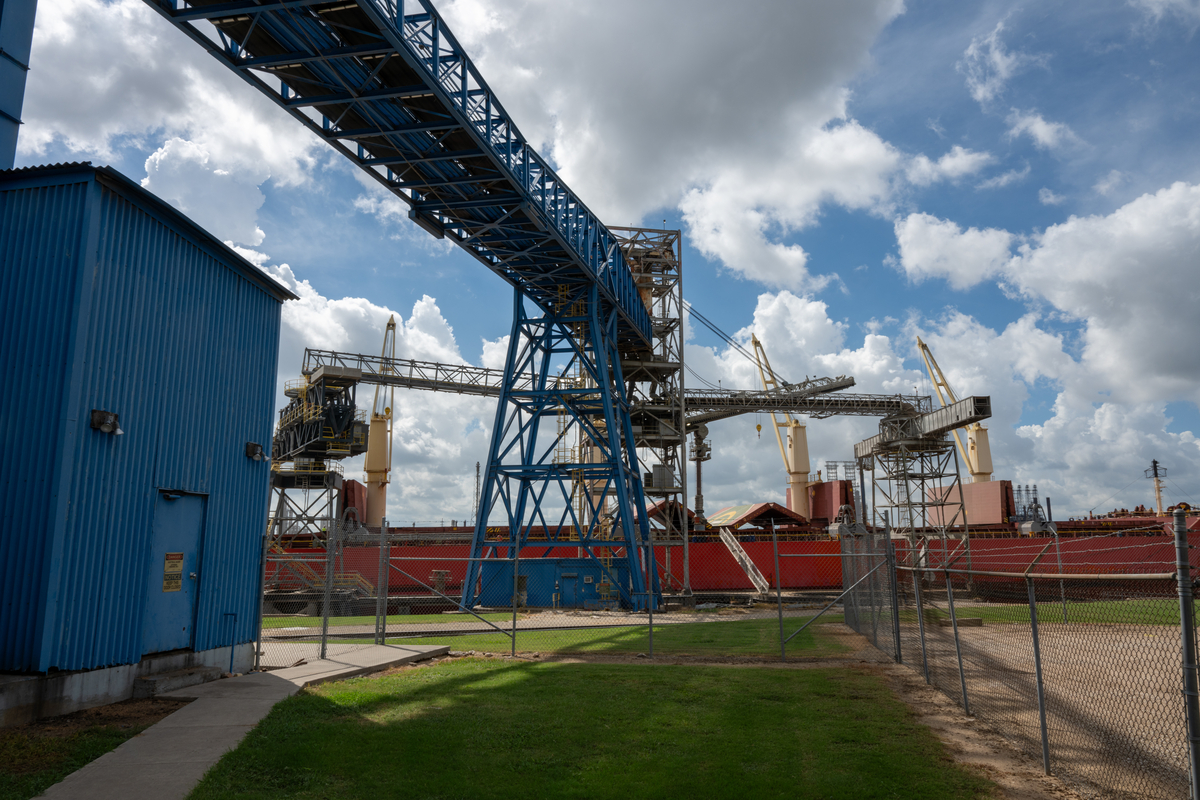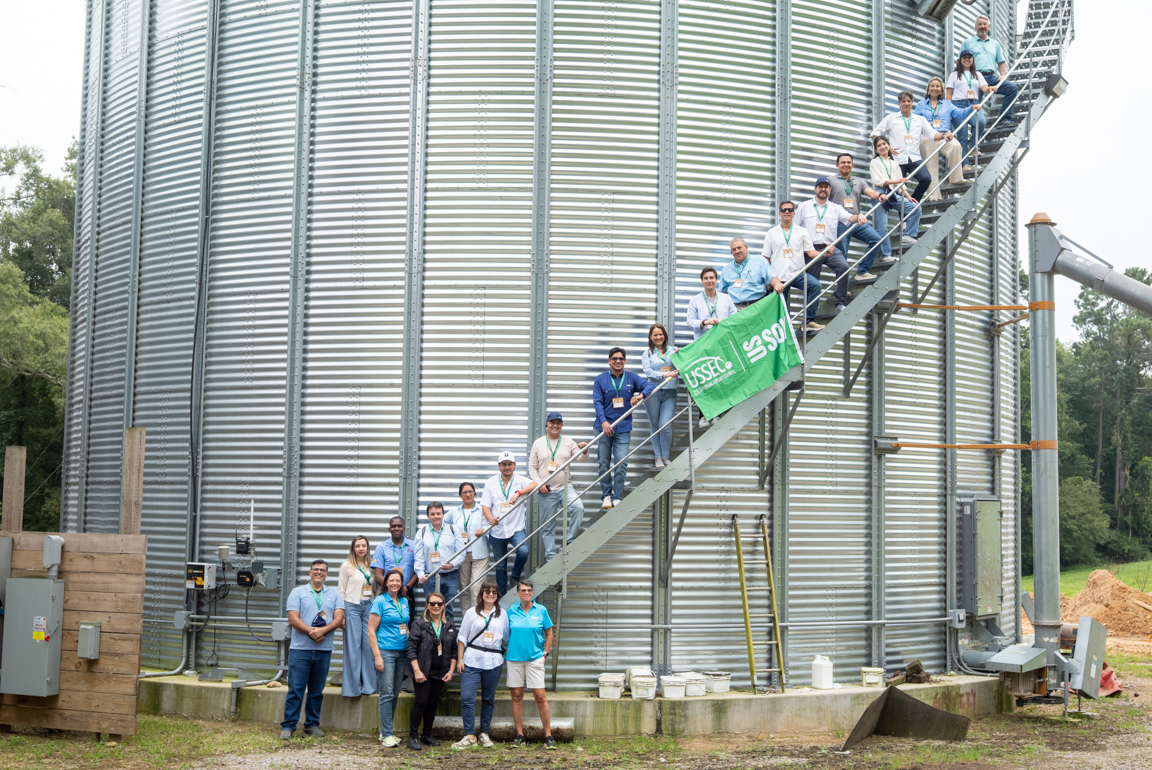Playing the Long Game with Animal Nutrition and Crop Production

Every agriculture producer has a unique set of goals they use to benchmark progress. The common theme among all producers is to achieve peak efficiency and profit potential for long-term success. Livestock producers focus on keeping up with the latest in animal nutrition to market a high-quality product while being efficient. Soybean producers consistently evaluate variety and trait package options to protect and produce high yields every season.
To make decisions on seed varieties and nutrition, producers rely on a team of seed advisors, nutritionists and agronomists to share their knowledge throughout the production cycle. Beyond the elevator, the agriculture industry is changing, and competition is increasing. It’s important for farmers to understand the industry beyond the farm’s production goals and see the long game. There’s a growing amount of cause and effect happening across different industry segments that impacts decisions made on the farm. From the aftermath of challenging weather to animal diseases outbreaks, evaluating how the supply chain is evolving puts farmers in the position to meet the needs of a global economy.
Bridging the Knowledge Gap
It’s easy to become siloed in one way of thinking about agriculture production. As the landscape of modern agriculture evolves, it’s crucial to close the gap among industries to find improved efficiencies and opportunities. The soy checkoff recognizes the need for communication between two agriculture industries: animal nutrition and soybean production. To support an open exchange between farmers who produce soy and nutritionists who consult with livestock producers on purchasing soy, the checkoff developed the Animal Nutrition Working Group.
For over a decade, 15 specialized animal nutritionists from across the country come together twice a year. The group focuses on soybean research and improvement in swine and poultry production, specifically nutrition. A greater understanding among the soybean and animal production industries gives farmers insight into their largest customers’ needs and allows producers to farm smart, creating new opportunities for soybean demand.
In addition to the research, the group discusses other issues impacting the swine and poultry industries and how those issues ultimately affect demand. Currently, the swine industry is experiencing repercussions from African swine fever on a global scale. Additionally, poultry farmers are consistently focused on avian influenza and how it impacts production for farmers and processors. This workgroup contextualizes these stressors from across the world and makes them relatable to the U.S. soybean farmer.
During working group meetings, nutritionists and soybean leaders exchange key information from their research, including trends in the animal nutrition industry and soybean value chain. The participants take their new learnings and insights back to fellow colleagues, clients and key industry members.
John Harrell, a Pennsylvania soybean farmer and former United Soybean Board director, attended a recent Animal Nutrition Working Group meeting. “This meeting really caused me to think. I left with more questions than answers, wanting to hear more,” Harrell said.
Creating Demand for Years — Soybeans and Livestock Nutrition
Swine and poultry are the largest consumers of soy ingredients, soy’s top clients. Over 50% of the soybean meal sold in the United States is used in diets developed for poultry, and an additional 26% is used to feed swine.1
The research supported by the checkoff and the Animal Nutrition Working Group work to build demand for soybeans in both livestock industries. Specifically, both poultry and swine producers desire soybean varieties with a higher protein content. Nutritionists are consistently working side by side with their producer clients to create a complete ration to reach animal nutrition goals without sacrificing budget.
Soybeans can provide benefits to a ration because they deliver a full package of essential amino acids. With soybean meal derived from a higher protein variety, livestock producers can use one ingredient to help fulfill two nutritional goals with one product. Synthetic products are also available on the market and compliment soy’s ability to provide amino acids and protein. However, synthetic options can come at a higher cost and impact profit potential. It’s important as livestock producers develop their animal diets with a nutritionist regularly to keep both options in mind for a well-balanced result, in both feed and budget.
Soybean meal brings other efficiencies to the ration. Not only is soybean meal protein easy for livestock to digest, but with the right blend of nutrients, allows the amino acids to be absorbed effectively.
“Nutritionists have a lot of options with synthetic products, and more are being added all the time,” said Harrell. “The Animal Nutrition Working Group opened my eyes to see the fact we need to do more to promote soybeans as a top solution for animal nutrition.”
It’s important to listen to animal nutritionists explain how soybean ingredients fit into the ration and why soybean varieties make a difference to livestock producers. With over 75% of soybean meal going directly to swine and poultry producers, growers need to take note of the impact their soybean variety selection has on the end user. The more soybean farmers work to produce a high-protein end product, the more livestock producers will turn to a soybean byproduct versus a costly synthetic.
In this long game, soybean producers can work with their local seed advisor and grain processor to learn more about how high-protein soybeans can fit the needs, and demand, of animal producers. Programs currently exist that pay a premium for soybeans with improved compositional quality. For example, the Illinois Soybean Board has assisted in these efforts for a higher premium for nutritional quality with the HY+Q program.
Impact of Livestock Disease and Demand
In addition to facing economic pressure in ration ingredients, livestock producers fight ongoing threats to their production. Diseases and viruses can quickly take their toll and wipe out large portions of swine and poultry populations, diminishing the number of animals to feed and ultimately the demand for soy ingredients.
- African Swine Fever (ASF) — The most recent outbreak started in August 2018 and shows no signs of eradication. ASF is wiping out herds of swine in Asia and Western Europe at an alarming rate. Close to 1.17 million pigs in China have been culled as a result of efforts to contain the spread of ASF.2
This impacts American farmers in two ways: the increased need for exports of pork to the Asia market and the decrease of demand for export of soy products as a feed ingredient. It’s anticipated the global swine and soybean industries will be experiencing the effects of ASF for years.
- Avian Influenza (AI) — These viruses are highly contagious and spread quickly through a flock of production birds. Poultry can become infected through contact with other infected poultry or through contact with contaminated surfaces. The HPAI virus infection affects multiple organs, with a 90-100% mortality rate within 48 hours.3 Similar to ASF, outbreaks of AI impact global poultry and soybean economies.
Farmers and animal producers can feel the direct impact of disease outbreaks in swine and poultry production for years, even after the disease is controlled. Soybean farmers need to be aware of these fluctuations in demand. Farmers looking to play the long game in agriculture understand market dynamics and think differently to produce a crop that will create more demand both locally and abroad.
Planning for Long-Term Goals
Industries across the globe find efficiencies by changing how they do business and market their products — agriculture is no exception to this trend. The checkoff hosts the Animal Nutrition Working Group to have direct access into an important market for soybean ingredients.
“Farmers think about soybeans just on a bushel basis, but animal nutritionists are interested in more than that,” Harrell said.
Partnerships such as the Animal Nutrition Working Group provide input and insight into the global needs of poultry and swine production and how they will influence demand for soy. This knowledge is crucial to understanding livestock producers and how they play their position in the soy checkoff’s long game. The information from these partnerships helps farmers-leaders evaluate programs, make decisions on future research and develop long-term goals to support all soybean farmers in meeting ever-evolving demands for soybeans.
Find additional information on why animal nutrition is so important to soybeans here.
2https://www.fao.org/ag/againfo/programmes/en/empres/ASF/situation_update.html



